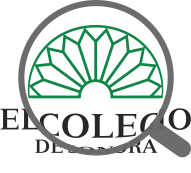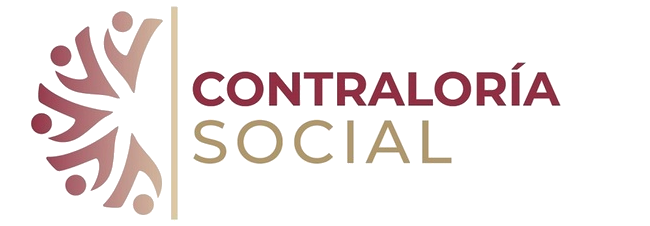Human capital and regional poverty in Peru
Capital humano y pobreza regional en Perú
| dc.contributor.author | León Mendoza, Juan Celestino | |
| dc.coverage.spatial | MX-SON | en-US |
| dc.creator | León Mendoza, Juan Celestino | |
| dc.date | 2019-03-20 | |
| dc.date.accessioned | 2022-06-28T19:43:03Z | |
| dc.date.available | 2022-06-28T19:43:03Z | |
| dc.date.issued | 2019-03-20 | |
| dc.identifier | https://regionysociedad.colson.edu.mx:8086/index.php/rys/article/view/1058 | |
| dc.identifier | https://doi.org/10.22198/rys2019/31/1058 | |
| dc.identifier.uri | https://repositorio.colson.edu.mx/handle/2012/45961 | |
| dc.description | The aim of this article is to determine the influence of human capital on the evolution of regional monetary poverty in Peru. In the context of the human capital theory, it is postulated that accumulation of this capital, approximated by the education and health variables, contributed to reduce the extent of poverty through economic growth. For this purpose, econometric estimations were performed using the ordinary least squares method and the heteroscedasticity, multicollinearity and autocorrelation tests. The results show that for each additional year of schooling attained and for each additional year in life expectancy, the percentage of individuals living in poverty decreased by 8.7 and 3.1 points, respectively. The study, limited to the analysis of monetary poverty, found that human capital plays an important role in reducing regional poverty. | en-US |
| dc.description | El objetivo del artículo es determinar la influencia del capital humano sobre la evolución de la pobreza monetaria regional en Perú. En el marco de la teoría del capital humano, se postula que la acumulación de este capital, aproximado por las variables de educación y salud, contribuyó a reducir la magnitud de la pobreza mediante el crecimiento económico. Para ello se efectuaron estimaciones econométricas con el método de los mínimos cuadrados ordinarios y las pruebas de heterocedasticidad, multicolinealidad y autocorrelación. Los resultados indican que por cada año más de escolaridad alcanzado y por cada año adicional en la esperanza de vida, el porcentaje de individuos en situación de pobreza se redujo en 8.7 y 3.1 puntos respectivamente. El estudio se limitó al análisis de la pobreza monetaria, y se halló la relevancia del capital humano en la reducción de ésta en las regiones. | es-ES |
| dc.description.abstract | The aim of this article is to determine the influence of human capital on the evolution of regional monetary poverty in Peru. In the context of the human capital theory, it is postulated that accumulation of this capital, approximated by the education and health variables, contributed to reduce the extent of poverty through economic growth. For this purpose, econometric estimations were performed using the ordinary least squares method and the heteroscedasticity, multicollinearity and autocorrelation tests. The results show that for each additional year of schooling attained and for each additional year in life expectancy, the percentage of individuals living in poverty decreased by 8.7 and 3.1 points, respectively. The study, limited to the analysis of monetary poverty, found that human capital plays an important role in reducing regional poverty. | en-US |
| dc.description.abstract | El objetivo del artículo es determinar la influencia del capital humano sobre la evolución de la pobreza monetaria regional en Perú. En el marco de la teoría del capital humano, se postula que la acumulación de este capital, aproximado por las variables de educación y salud, contribuyó a reducir la magnitud de la pobreza mediante el crecimiento económico. Para ello se efectuaron estimaciones econométricas con el método de los mínimos cuadrados ordinarios y las pruebas de heterocedasticidad, multicolinealidad y autocorrelación. Los resultados indican que por cada año más de escolaridad alcanzado y por cada año adicional en la esperanza de vida, el porcentaje de individuos en situación de pobreza se redujo en 8.7 y 3.1 puntos respectivamente. El estudio se limitó al análisis de la pobreza monetaria, y se halló la relevancia del capital humano en la reducción de ésta en las regiones. | es-ES |
| dc.language.iso | spa | |
| dc.publisher | El Colegio de Sonora | es-ES |
| dc.rights | Derechos de autor 2019 Juan Celestino León Mendoza | es-ES |
| dc.rights | info:eu-repo/semantics/openAccess | es-ES |
| dc.source | 2448-4849 | |
| dc.source | 1870-3925 | |
| dc.source | región y sociedad; Vol. 31 (2019): Rolling Pass | en-US |
| dc.source | región y sociedad; Vol. 31 (2019): Publicación continua | es-ES |
| dc.subject | Ciencias Sociales | |
| dc.subject | Poverty | en-US |
| dc.subject | Monetary poverty | en-US |
| dc.subject | Human capital | en-US |
| dc.subject | Standard of living | en-US |
| dc.subject | Life expectancy | en-US |
| dc.subject | Peru | en-US |
| dc.subject | Pobreza | es-ES |
| dc.subject | Pobreza monetaria | es-ES |
| dc.subject | Capital humano | es-ES |
| dc.subject | Nivel de vida | es-ES |
| dc.subject | Esperanza de vida | es-ES |
| dc.subject | Perú | es-ES |
| dc.subject.lcsh | Poverty | en-US |
| dc.subject.lcsh | Monetary poverty | en-US |
| dc.subject.lcsh | Human capital | en-US |
| dc.subject.lcsh | Standard of living | en-US |
| dc.subject.lcsh | Life expectancy | en-US |
| dc.subject.lcsh | Peru | en-US |
| dc.subject.lcsh | Pobreza | es-ES |
| dc.subject.lcsh | Pobreza monetaria | es-ES |
| dc.subject.lcsh | Capital humano | es-ES |
| dc.subject.lcsh | Nivel de vida | es-ES |
| dc.subject.lcsh | Esperanza de vida | es-ES |
| dc.subject.lcsh | Perú | es-ES |
| dc.title | Human capital and regional poverty in Peru | en-US |
| dc.title | Capital humano y pobreza regional en Perú | es-ES |
| dc.type | info:eu-repo/semantics/article | |
| dc.type | info:eu-repo/semantics/publishedVersion | |
| dc.audience | generalPublic | |
| dc.identificator | 5 |
Files in this item
| Files | Size | Format | View |
|---|---|---|---|
|
There are no files associated with this item. |
|||










